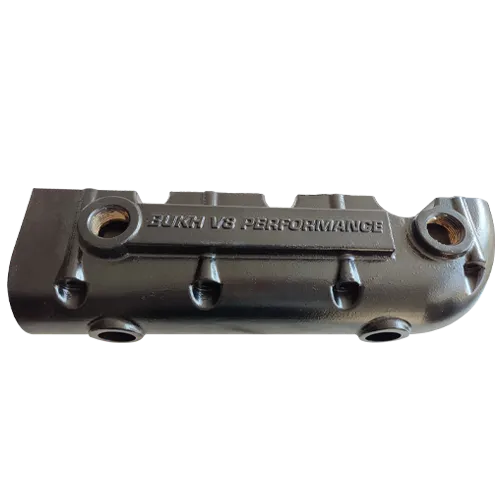Mobile:+86-311-808-126-83
Email:info@ydcastings.com
Optimizing Performance with Upgraded Exhaust Manifolds for 420A Engine Applications and Modifications
Understanding the 420A Exhaust Manifold Design, Function, and Performance
The exhaust manifold is a critical component of an internal combustion engine, responsible for channeling exhaust gases away from the engine cylinders and into the exhaust system. In vehicles equipped with the Mitsubishi 420A engine, commonly found in models like the Eclipse and Talon, the design and functionality of the exhaust manifold play a significant role in the overall performance and efficiency of the engine.
Design of the 420A Exhaust Manifold
The 420A exhaust manifold is crafted from durable cast iron, which is chosen for its excellent heat resistance and structural integrity. The manifold features a multi-port design, allowing it to effectively merge the exhaust streams from each of the engine's four cylinders. The efficiency of this design is crucial, as it minimizes back pressure, enabling smoother exhaust flow.
One notable aspect of the 420A exhaust manifold is its bolted flange that connects to the exhaust pipe. This joint is designed to create a reliable seal, preventing exhaust leaks that can lead to decreased performance and increased emissions. The casting process ensures that the manifold has a uniform thickness, which is important for heat dissipation.
Functionality
The primary function of the 420A exhaust manifold is to collect exhaust gases from the engine's cylinders and direct them to the exhaust system. The manifold helps maintain optimal engine performance by ensuring that exhaust gases exit the engine efficiently. When the exhaust system flows freely, it can help enhance engine power and fuel efficiency.
420a exhaust manifold

In addition to directing gases, the exhaust manifold must also withstand high temperatures and pressures. As the engine operates, exhaust gases can reach extremely high temperatures, causing the manifold to expand and contract. The design of the 420A manifold accommodates these thermal dynamics, thereby preventing warping or cracking over time.
Performance Considerations
The performance of the 420A engine can be significantly influenced by the exhaust manifold. A well-designed manifold can lead to improved throttle response and overall power output. Enthusiasts often consider upgrading the stock manifold to a performance-oriented option, which may be crafted from lighter materials such as stainless steel or designed with a more efficient flow path.
While aftermarket exhaust manifolds can offer performance benefits, installation requires careful consideration. Factors such as fitment, exhaust gas temperatures, and engine tuning all play a role in realizing the true potential of an upgraded manifold. Additionally, it's critical to ensure that any modifications comply with local emissions regulations.
Conclusion
The 420A exhaust manifold is an integral part of the engine's system, contributing both to performance and efficiency. Its robust design and functionality not only manage exhaust gases but also support the engine's overall performance characteristics. Upgrade paths exist for enthusiasts looking to extract more power from their 420A engines; however, careful selection and installation are key to ensuring optimal performance and compliance with regulations.
In summary, understanding the role of the 420A exhaust manifold aids in appreciating the complexity of automotive engineering. Whether one is a casual driver or a performance enthusiast, recognizing how such components work together can lead to better maintenance and modifications, maximizing the vehicle's capabilities and lifespan.
-
Why Should You Invest in Superior Pump Castings for Your Equipment?NewsJun.09,2025
-
Unlock Performance Potential with Stainless Impellers and Aluminum End CapsNewsJun.09,2025
-
Revolutionize Your Machinery with Superior Cast Iron and Aluminum ComponentsNewsJun.09,2025
-
Revolutionize Fluid Dynamics with Premium Pump ComponentsNewsJun.09,2025
-
Optimizing Industrial Systems with Essential Valve ComponentsNewsJun.09,2025
-
Elevate Grid Efficiency with High-Precision Power CastingsNewsJun.09,2025











